#transportation emissions
Text
Big Oil faces a tiny foe on the streets of Asia and Africa. The noisy, noxious vehicles that run on two and three wheels, carrying billions of people daily, are quietly going electric — in turn knocking down oil demand by one million barrels a day this year. ...
The global majority doesn’t roll on four wheels.
In Nairobi and Hanoi, motorcycles serve as taxis. In Mumbai, scooters can carry a family of four. In China, electric bicycles are how millions commute.
“Electric bikes are quieter, much more efficient and good for the environment,” said Jesse Forrester, the founder of Mazi Mobility, which has 60 electric motorcycle taxis, known as boda-bodas, on the roads in Nairobi. “There’s a quiet revolution now in Kenya driving this transformation for the future.” ....
In Darbhanga, a new acid-battery rickshaw, like the one Mr. Rai drives, sells for around 175,000 rupees, or $2,100. That’s half the price of a new rickshaw powered by natural gas. Charging the battery costs 20 rupees (25 cents), one-fourth of the price of filling a gas tank.
The rebates seem to be working. Reliance Industries, India’s biggest company, is converting its three-wheeled cargo vehicles from gas to electric. Food delivery services are going electric as quickly as possible.
No paywall: https://web.archive.org/web/20231209105128/https://www.nytimes.com/2023/12/09/business/energy-environment/two-three-wheel-electric-vehicles.html
23 notes
·
View notes
Text
"California just cracked down on pollution from transportation in two major moves, part of an effort to improve air quality and cut carbon emissions at the same time.
On Friday, the California Air Resources Board unanimously approved a rule that would ban the sale of diesel big rigs in the state by 2036. The mandate, which will apply to about 1.8 million trucks — including those operated by Amazon, UPS, and the U.S. Postal Service — is reportedly the first in the world to require trucks to ditch internal combustion engines. The news came one day after California became the first state to adopt standards to limit pollution from trains.
Trucks and Diesel
The regulations are intended to improve air quality and trim carbon emissions from transportation, the source of about half the state’s greenhouse gases. Trucks and trains spew diesel exhaust, full of soot that contains more than 40 cancer-causing substances, responsible for an estimated 70 percent of Californian’s cancer risk from air pollution.
The trucking rule requires school buses and garbage trucks to be emissions-free within four years. By 2042, all trucks will be required to be “zero-emission,” meaning there’s no pollution coming out of their tailpipes. The deadline comes sooner for drayage trucks, which transport cargo from ports and railyards to warehouses — typically short routes that require less battery range. New drayage trucks must be “zero-emission” beginning next year, with the rule applying to all drayage trucks on the road in 2035.
Currently, medium and heavy-duty vehicles account for a fifth of greenhouse gas emissions statewide. In August, California clamped down on pollution from passenger vehicles with a plan to end the sale of new gas-powered cars in the state by 2035.
People breathing pollution from freeways and warehouse hubs have long called for stricter air standards. In the port cities of Long Beach and Los Angeles, some 6,000 trucks pass through every day, exposing residents to high levels of ozone and particulate matter, pollutants linked with a range of problems including respiratory conditions and cardiovascular disease. Long Beach residents who live the closest to ports and freeways have a life expectancy about 14 years shorter compared to people who live further away...
Trains and Locomotives
According to the new rules, the state is banning locomotive engines that are more than 23 years old by 2030. It also bans trains from idling for more than 30 minutes, provided that they are equipped with an engine that can shut off automatically.
The stage for the rule was set by a single line buried in the Biden administration’s proposed auto emissions rules, in which the Environmental Protection Agency said it was considering allowing states to regulate locomotives. Still, California’s new rules may spark a legal battle with the rail industry, which argues that the state doesn’t have the authority to make such sweeping changes.
Though railroads only account for about 2 percent of the country’s carbon emissions from transportation, switching to trains powered by batteries or hydrogen fuel cells would provide some benefits in the effort to tackle climate change. The public health gains would be even bigger: The California Air Resources Board estimates its new rules for trains, passed on Thursday, would lower cancer risk in neighborhoods near rail yards by more than 90 percent.
“This is an absolutely transformative rule to clean our air and mitigate climate change,” Liane Randolph, the chair of the air quality board, said ahead of the vote on the trucking rules on Friday. “We all know there’s a lot of challenges, but those challenges aren’t going to be tackled unless we move forward … if not now, when?”"
-via The Grist, 4/28/23
#united states#california#sustainability#greenhouse gasses#carbon emissions#transportation#diesel#trains#freight train#locomotive#gavin newsom#epa#environment#cw cancer#carcinogens#public health#environmental justice#environmental racism#good news#hope
125 notes
·
View notes
Text
not me looking at the price of a one adult one child train journey that'd take 20 minutes With a longish stop on a platform somewhere and crying in that's too expensive
#your casual reminder that advocating for public transport ain't worth shit if it's privately ran#just throwing that out there#what's worse than not having good train and bus lines???#having them and not being able to use them bc at this point they're not for poor people#imagine the emission reduction if they slashed train prices#as it is it's way cheaper to just drive so...
7 notes
·
View notes
Text
#!!!!#good news#science#environmentalism#carbon capture#automobiles#obvs we need public transport#but this is a good development#mobile carbon capture#carbon emissions#transportation
20 notes
·
View notes
Text
personally I feel like there is something in the mind of people with private jets that doesn't allow them to see themselves the same way they see other people. it's a blown up version of the superiority complex megatruck owners have. almost like they can separate themselves from the suffering of the common people by elevating themselves, literally and financially, over them. sad.
#seal.txt#like obviously you guys know who im referring to here. but also that one megachurch guy that believed regular transport#was full of demons because normal people used it#such as highways and regular airplanes#not that i think the person im writing this about believes that (i really dont know much about her) but i think this might be something#that she may unconsciously feel.#even if she might not know it#like. as someone who has driven in st louis i understand that it can suck#(mostly due to the street design of the french tbh)#but resorting to massive carbon emissions just to avoid it is. just sad.#it wasnt even really much faster for her to go in a plane LOL
6 notes
·
View notes
Text
I can see how the regional phenomena in totk is basically totk's version of a modern 4 horsemen of the apocalypse: pollution (the sludge), addiction (marbled rock roast), climate change (the extreme blizzard; admittedly this one is a bit of a stretch), and pestilence/infectious disease (the giant mosquito boss and the undead gibdo). Which, hey, references to real life issues, great, but what I didn't like so much was how you can just solve puzzles and fight bosses--basically have a handful of big name heroes running around doing tasks--and the water will magically clear up, the addicts will magically become normal people again, the extreme storms will magically dissipate, and the pestilence will magically disappear. Real life does not work that way. I know, I know, it's a game why you taking it so seriously blah blah, but I'm just saying, we have to remember that for any of these problems to be solved, it takes a lot of effort and cooperation from a lot of people to accomplish, and that's definitely an understatement.
#totk spoilers#:P#i haven't played many other zelda games so i can't say#but botw and totk are basically the Great Man Theory#aka 'we only need a few big heroes to save the day and nobody else's input is worth much'#maybe I'm too nitpicky or maybe I'm too old to suspend my disbelief entirely#something about that just doesn't quite sit right with me :P#doesn't mean the game is bad but just my thoughts#and let me add that genshin is also kind of a Great Man Theory sort of game on the surface#but in genshin the story itself actually does challenge that idea in many different places#whereas in botw and totk nothing about that logic is even questioned#you are expected to just accept that 'oh the hero defeated the bad guys and now the problems magically went away'#and since we are talking about real life issues this approach is honestly incredibly lazy#basically the same as 'if everyone can drive less (aka be a hero!) then we can reduce emissions and save the environment!'#while completely ignoring how driving is basically essential to life in the greatest country on earth (tm)#bc of urban planning lack of effective public transportation systems and lobbyists#it's a systemic problem and it's not going to be solved by being heroes or eating the rich#in conclusion: if you want to put real life issues in your game please don't be lazy with it#and if you want the traditional hero vs big bad thing then please stay away from real life issues#this is part of the reason why botw is better than totk
16 notes
·
View notes
Note
I feel that how Bryce takes care of his car depends on the car itself:
If it’s an old, rusty, cheap one then everything goes in there
But once he’s been an attending surgeon for years and is finally earning enough money to buy himself a shiny new sports car? You bet he’ll take better care of it than himself. In fact, he won’t let people touch it with their bare hands
yeah i can see that!! bryces car is a pos but it gets him from point a to point b decent enough. i also hc that he likes the pretty sports cars but has not a fucking clue how to take care of it mechanics wise (like if anything sounds wrong or a new light on the dash is blinking he shrugs and moves on which drives jensen insane but anyway)
in my hc instead of a sports car he gets a jeep bc,, idk it seems like him but yeah it def stays cleaner and if it gets smudged or there's a hand print on it he Will notice. also bc if he leaves shit in there it will all fly out when he takes the doors/roof off so,,
#this does have me thinking of him getting a sports car though#it doesmt really work when he can only drive it for like 6 months out of the year lol#chicago winters are not kind to pretty cars but also he probably doesnt care so..#he does care about emissions ans stuff though so i kinda doubt hed ever do it#especially since he and jensen usually walk or use public transport once theyre in chicago#idk lots to think about#thanks for the ask !!#asks answers
4 notes
·
View notes
Text
Exploring the Dynamics of the Synthetic Fuels Market: A Sustainable Energy Solution
The Synthetic Fuels Market is rapidly gaining traction as a viable alternative in the quest for sustainable energy sources. With the growing concerns over climate change and the need to reduce carbon emissions, synthetic fuels offer a promising solution. These fuels, also known as e-fuels or renewable fuels, are produced through advanced processes that utilize renewable energy sources such as wind, solar, or hydroelectric power.
One of the primary drivers behind the surge in demand for synthetic fuels is the global shift towards greener energy solutions. Governments, industries, and consumers alike are increasingly recognizing the importance of reducing dependency on fossil fuels and embracing renewable alternatives. Synthetic fuels present a compelling option as they not only offer a cleaner energy source but also provide a pathway to decarbonizing sectors such as transportation, industrial manufacturing, and power generation.
The versatility of synthetic fuels is another factor contributing to their growing popularity. Unlike traditional fossil fuels, synthetic fuels can be easily integrated into existing infrastructure without the need for significant modifications. This means that vehicles, aircraft, and machinery powered by gasoline or diesel can seamlessly transition to synthetic fuels without compromising performance or efficiency. Additionally, synthetic fuels can be tailored to meet specific energy needs, offering a customizable solution for various applications.
Moreover, advancements in technology have significantly improved the efficiency and cost-effectiveness of synthetic fuel production. Innovative processes such as Power-to-Liquid (PtL) and Gas-to-Liquid (GtL) have made it possible to produce synthetic fuels on a commercial scale, driving down production costs and increasing accessibility. As a result, synthetic fuels are becoming increasingly competitive with conventional fossil fuels, further fueling their adoption across different sectors.
The transportation industry stands to benefit significantly from the widespread adoption of synthetic fuels. With concerns over air quality and emissions regulations becoming more stringent, many vehicle manufacturers are exploring alternative fuel options to meet regulatory requirements and consumer demand for greener transportation solutions. Synthetic fuels offer an attractive alternative, providing a bridge between conventional combustion engines and future zero-emission technologies such as electric vehicles and hydrogen fuel cells.
In addition to transportation, synthetic fuels find applications in other sectors such as power generation and industrial manufacturing. The ability to produce clean, reliable energy from renewable sources makes synthetic fuels an appealing choice for companies seeking to reduce their carbon footprint and meet sustainability targets. Furthermore, synthetic fuels offer energy security benefits by reducing reliance on imported oil and mitigating the geopolitical risks associated with fossil fuel dependence.
Looking ahead, the Synthetic Fuels Market is poised for significant growth as the world transitions towards a low-carbon economy. With ongoing advancements in technology, coupled with increasing environmental awareness and regulatory pressures, the demand for synthetic fuels is expected to soar in the coming years. As governments and industries continue to invest in renewable energy solutions, synthetic fuels are well-positioned to play a crucial role in shaping the future of energy production and consumption.
#energy#sustainability#renewable fuels#e-fuels#carbon emissions#alternative energy#transportation#industrial applications
2 notes
·
View notes
Text
Australian automobile emission standards news
The story in this link says Australia is one of the last industrialized countries to impose environmental regulations on vehicle emissions and automobile manufacturers like VW and Tesla are protesting them being implemented.
https://www.reuters.com/business/autos-transportation/volkswagen-quits-australia-auto-lobby-committee-fight-grows-over-green-fuel-2024-03-11/
Private vehicles are frequently depicted in Bluey, so it’s always interesting reading about them “for real life”, especially if you’re in the transportation planning profession like I am. 🚗


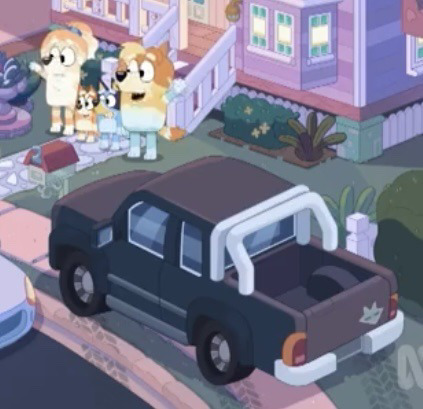
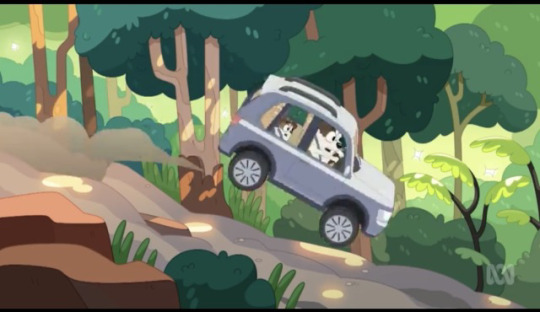


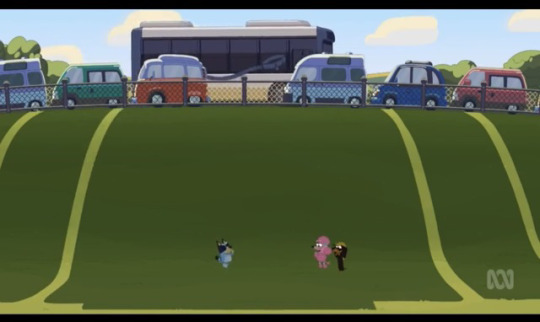
4 notes
·
View notes
Text

ok so I guess mink lashes are a weird expensive thing you can go out of your way to buy but mainstream fake eyelashes have been plastic since the 50s so what is the point of this advertising
#never trust any non food product thay uses veganism as marketing#and honestly distrust prepackaged vegan foods that are manufactured overseas#like ok its vegan but it creates how much plastic trash and carbon emissions to transport to market?
26 notes
·
View notes
Link
“Oslo is on course to become the first capital city in the world with an all-electric public transport system, targeting that goal for the end of 2023 as part of its aim to become the world's first wholly emissions-free city by 2030.
The transport push entails replacing its diesel-fuelled buses with 450 electric ones, under a 500 million crown ($47 million) programme that Sirin Stav, Vice-Mayor responsible for environment and transport, said will save the city money over the long term.
"The maintenance is cheaper, it's also cheaper for the operators of the electric buses," she said. "All in all, this is a win-win situation."
She encourages other cities to follow Oslo's example - the city of 700,000 has already electrified most of the ferries that ply the fjord on which it is located - and notes that, in its last tender, e-buses were 5% cheaper than diesel equivalents.” -via Reuters, 10/14/22
35 notes
·
View notes
Text
'chartering a commercial 747 is less emissions than using a private jet' <-actual thing i have seen people saying on here.
this is not true. basic logic; a bus emits more than a car when travelling the same distance. reason bus is more environmentally friendly: the much larger number of people it can hold far outweighs the larger emission overall so it's less emissions per passenger.
747=bus in the sky. private jet=car in the sky.
i don't care how fuel efficient you make your bus/747 and how many environmentally friendly things you add to it (unless it's fully electric and renewably powered but we don't have that for planes) it will always take more energy to get a bigger vehicle off the ground and going wherever it goes than a much smaller one. weight/size is the biggest limiting factor here. there's no point using a bigger vehicle if you're running it mostly empty*
*(with buses they sometimes do run mostly empty off peak because you need them there for the times they fill up, you never know when this might happen. with a chartered plane you know exactly who's going to be on it. if you must use a plane either jump in the one with everyone else or use the smallest one possible that can hold everyone you need)
#climate solutions#climate change#climate action#carbon emissions#renewableenergy#celebrities are people#bc it's always people coming at celebrities for this#and to some degree should they be called out on this? yes#but commercial flying was never truly green. just more people packed into the polluting tube so your share is less#sustainable transport#long distance train still S tier
2 notes
·
View notes
Text
Electric Vehicle Plastics Market: An In-Depth Exploration and its Contribution to a Circular Automotive Industry
The global electric vehicle plastics market size was estimated at USD 13.33 billion in 2030 and is anticipated to grow at a compound annual growth rate (CAGR) of 28.0% from 2024 to 2030. The industry is projected to witness significant growth in terms of consumption, on account of high application scope and increasing demand from the growing population. The Polypropylene (PP) resin demand in the Asia Pacific region is estimated to grow at the fastest CAGR over the forecast period. Strong government support & initiatives regarding emissions and increasing investment by manufacturers are propelling the growth of the region.
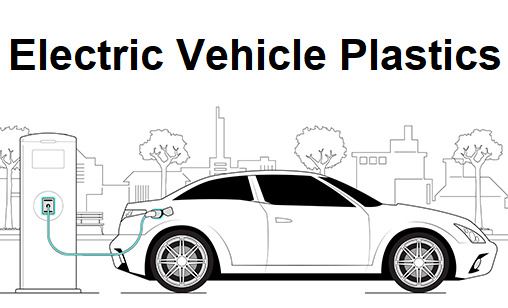
Electric Vehicle Plastics Market Report Highlights
The Asia Pacific region is estimated to grow at the fastest CAGR from 2022 to 2030. Increasing demand from the growing population coupled with environmental concerns among others are anticipated to drive market growth in the region
The battery segment is anticipated to register the fastest CAGR from 2022 to 2030. Batteries are one of the significant components of an EV and, in comparison to combustion engines, battery vehicles do not produce any emissions and are eco-friendly. The growing demand for EVs has promising growth for EV batteries
The exterior application segment accounted for the largest revenue share in 2021 and is estimated to continue its dominance over the forecast period due to the high demand in aesthetics
The BEV vehicle type segment led the industry in 2021 and it is anticipated to continue growing over the forecast period as PHEVs have higher maintenance costs than BEVs
For More Details or Sample Copy please visit link @: Electric Vehicle Plastics Market Report
Furthermore, EVs are efficient and require less maintenance as compared with traditional vehicles. These factors are expected to boost the demand for EVs, which is expected to drive the demand for plastics over the forecast period. Increasing utilization of plastics in EVs is anticipated to boost industry growth positively over the forecast period. Plastics have proven to perform well under harsh conditions through their resistance to shock, moisture, oxidation, and further maintaining their chemical and mechanical properties. Plastics will be crucial material for manufacturing lightweight and energy-efficient EVs. Based on resin type, PP is expected to witness major demand during the projected years.
Polypropylene is used in many components of the vehicle including bumpers, carpet fibers, cable insulation, and others. Properties, such as good heat, chemical & fatigue resistance, and others, are anticipated to drive the demand for PP in the industry. Major manufacturers are adopting expansion strategies, such as new product development, production facility expansions, mergers & acquisitions, and joint ventures. For instance, in October 2021, DuPont launched a new extension of its existing Zytel HTN range, named as Zytel 500 series. These products are developed to provide enhanced retention properties in e-mobility oils, electrically friendly characteristics, and a high Comparative Tracking Index (CTI).
EVPlastics #ElectricVehicles #SustainableDriving #EcoFriendlyCars #ElectricVehicleTech #CleanTransportation #GreenMobility #EVInnovation #PlasticsInEVs #FutureOfTransport #SustainableMaterials #EcoAutoDesign #EVManufacturing #PolymerInnovation #ZeroEmissionVehicles #GreenTechAuto #CleantechPlastics #EVDesign #EcoFriendlyPlastics #CircularAutoEconomy
#EV Plastics#Electric Vehicles#Sustainable Driving#Eco-Friendly Cars#Electric Vehicle Tech#Clean Transportation#Green Mobility#EV Innovation#Plastics In EVs#Future Of Transport#Sustainable Materials#Eco Auto Design#EV Manufacturing#Polymer Innovation#Zero Emission Vehicles#Green Tech Auto#Cleantech Plastics#EV Design#Eco-Friendly Plastics#Circular Auto Economy
2 notes
·
View notes
Text
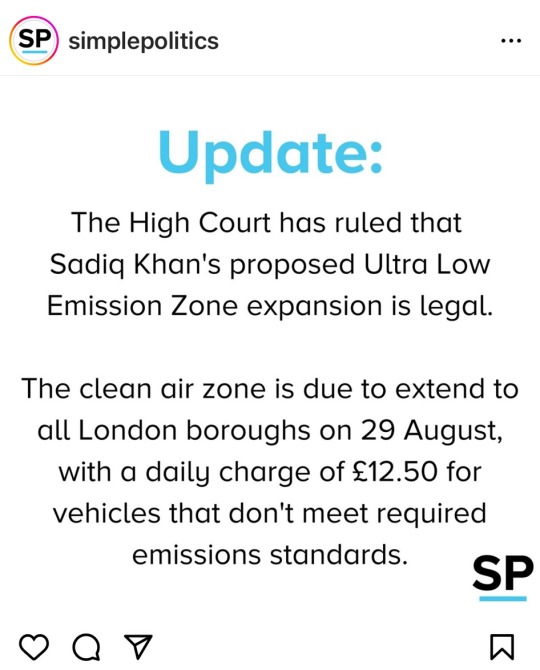
I’m by no means against this proposal- I do think we need to reduce our dependence on cars for the sake of the environment but as someone who lives around the verge of the London boroughs I think they need to put more funding into public transport and make it more regular/reliable/go to more places/affordable/etc before they implement this. At the moment there’s not a lot of alternatives in place for people *not* to travel by cars.
#also yes I know some cars are exempt from the emission charge but still.#in central London it’s so much easier to travel by public transport#outside of London?? some areas are lucky if they get a bus every hour ha#uk politics
3 notes
·
View notes
Link
#ipcc#climate change#climate crisis#nature#climate#warning#greenhouse gas#the conversation#news#stacy morford#cars#fossil fuels#emissions#global warming#intergovernmental panel on climate change#science#transportation#electric vehicles#disaster#flooding#society#civilization#danger
4 notes
·
View notes
Text

Happy pride I guess 🥂
#I don't usually buy wine from across the Atlantic because much better wine is available here that don't require excessive carbon emissions#to transport them#esp gato negro is shitty wine#but there weren't a lot of refrigerated options anymore at the corner store#and it is a pretty design :)#fr#tw alcohol
1 note
·
View note